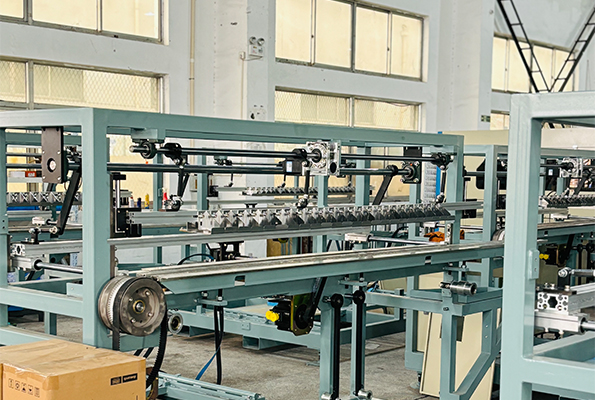The automatic pocket spring machine is not just a production tool—it is a strategic asset that directly elevates an enterprise’s competitiveness in the fiercely competitive bedding market, with its impact reverberating across efficiency, quality, cost control, market responsiveness, and brand value.
In terms of production efficiency, it shatters the limits of manual and semi-automatic processes. A single automatic machine can output 800–1,200 pocket springs per hour, a 5–10-fold increase compared to manual labor that struggles to produce 100–200 springs hourly. More critically, it supports 24/7 continuous operation (with only periodic maintenance) and features rapid parameter switching: via its PLC system, operators can adjust spring height, coil count, or fabric pocket size in 5–10 minutes to switch between producing twin-size mattress springs, king-size zone-support springs, or conical comfort springs. This agility allows enterprises to handle multiple small-batch orders or sudden large-volume demands (e.g., pre-holiday mattress rushes) without delays, outpacing competitors still reliant on slow, inflexible production lines.
Quality consistency, a make-or-break factor for mattress brands, is another key competitive edge. Manual production often suffers from inconsistent spring shape (due to human error) or faulty fabric seals (leading to spring displacement in use), resulting in a 5–8% defect rate. The automatic machine, however, controls spring diameter tolerance within ±0.1mm and uses ultrasonic welding for fabric pockets—ensuring 99.5%+ seal integrity. This near-zero defect rate not only reduces product returns and rework costs but also builds a reputation for reliability: retailers and end-users (such as high-end hotel chains or online mattress brands) are more likely to partner with manufacturers that deliver consistent quality, expanding the enterprise’s market reach.
Cost optimization further strengthens competitiveness. Labor costs, which account for 30–40% of manual pocket spring production, are cut by 60–70% as one operator can oversee 2–3 automatic machines (vs. 5–8 workers for the same output manually). Material waste is also minimized: the machine’s precision cutting reduces steel wire and fabric waste from 8–10% (manual) to 2–3%, translating to annual material savings of tens of thousands of dollars for mid-sized manufacturers. Lower unit costs let enterprises either price their pocket spring mattresses more competitively (capturing price-sensitive markets) or invest the savings in R&D (e.g., developing eco-friendly fabric pockets or pressure-sensitive springs), creating higher-value products that command premium prices.
Finally, the machine aligns enterprises with modern consumer and market trends. As demand for personalized, high-comfort mattresses grows (e.g., zone-support for back pain sufferers, ultra-soft springs for side sleepers), the automatic machine’s ability to produce custom spring designs efficiently lets enterprises quickly launch niche products—filling gaps that slower competitors cannot. Additionally, advanced models integrate energy-saving motors and scrap recycling systems, supporting ESG (Environmental, Social, Governance) goals. This not only meets global sustainability regulations but also appeals to eco-conscious buyers and partners, enhancing the enterprise’s brand image and long-term market viability. In short, the automatic pocket spring machine turns production capacity into competitive strength, helping enterprises thrive in a market where speed, quality, and innovation determine success.

